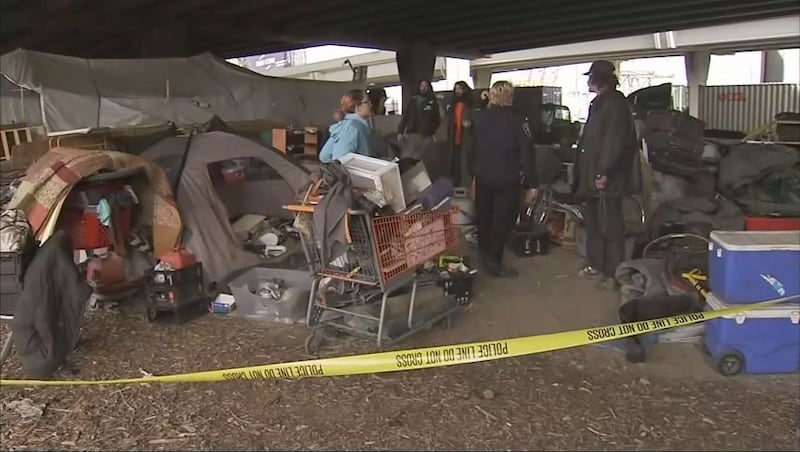SEATTLE — Seattle and King County announced a bold new goal Thursday — to get nearly everyone who is homeless in downtown Seattle into housing within a year. Major companies in King County are teaming up to address the issue, donating $10 million to the King County Regional Homelessness Authority (KCRHA) to lead the project.
Organizers say the new plan, called “Partnership for Zero,” will be different from anything previously tried in Seattle before. The first year of the project will focus on the area from Belltown through the Chinatown-International District, the section of the city with the highest concentration of homeless people.
“It’s the beginning of some good news today!” Seattle Mayor Bruce Harrell said during a press conference announcing the plans.
The business-backed part of the funding comes from Amazon, Microsoft Philanthropies, Starbucks, Boeing, Nordstrom, T-Mobile, the Bill and Melinda Gates Foundation, and more. But the majority of the $10 million donation came from the Ballmer Group, the philanthropic arm of billionaires Steve and Connie Ballmer.
“Joining others in this shared goal is the right path forward,” said Camille Hymes, Starbucks’ vice president of U.S. community impact.
CEO of the King County Regional Homelessness Authority, Marc Dones, said the goal is to have about 30 people or fewer still unhoused in downtown Seattle by the end of 12 months. The Homelessness Authority says there are currently 800 to 1,000 people unhoused in the downtown area.
“Do you think that goal is feasible?” KIRO 7′s Deedee Sun asked.
“Straightforwardly based on the data, yes,” Dones said. “We can’t keep saying in our community this is too hard to do, this is not possible to do. We have a responsibility to say this is what we must do,” he said.
Seattle resident Margaret Reid says she fought her way out of homelessness.
“They took your car with everything in it, so you drink. You’re scared. How the hell can it get so bad?” Reid said.
She believes simply throwing money at the problem isn’t going to work.
“What I want to say to the rich folks — if they want to help, don’t just give nobody nothing. Make them earn it,” Reid said.
Partnership for Zero says this latest plan is different because they will bring on at least 30 people with lived experience, who’ve previously been homeless and understand the system and its shortcomings. The peer team will also focus on building relationships.
“People want help. That’s actually never the issue. The question is, is the help the right help,” Dones said.
There are five phases of the plan:
- Phase 1: Create a Unified Command Center to clarify decision-making.
- Phase 2: Develop a “By-Name List” of everyone who is unsheltered and their individual needs.
- Phase 3: Case Planning and Service Matching — assessing resources and putting people on the path to permanent housing.
- Phase 4: Draw Down — housing and shelter placements take effect.
- Phase 5: Hold Steady — maintain the plan and address people who are newly homeless.
“When we talk about in the city of Seattle removing tents, clearing our sidewalks, yes we want to do that. But what’s driving it is we want to house people. We get them the treatment they need and deserve. That is Seattle at its best,” Harrell said.
The Homelessness Authority said it places 6,000 individuals and families who are homeless into housing every year. However, it’s still not keeping up with people who are becoming homeless and falling out of housing. It hopes the peer navigators and the relationship-based approach will change that.
©2022 Cox Media Group








